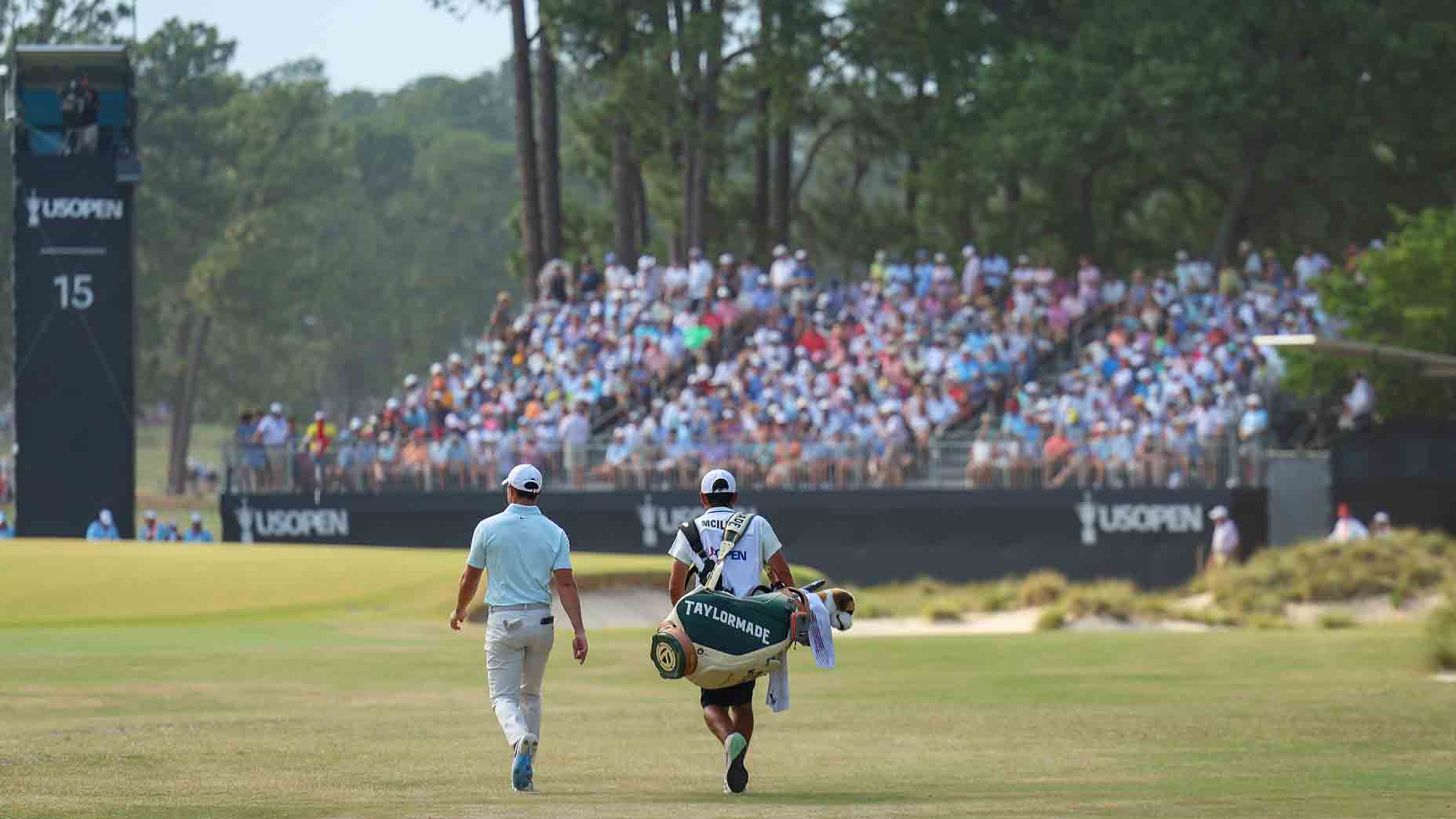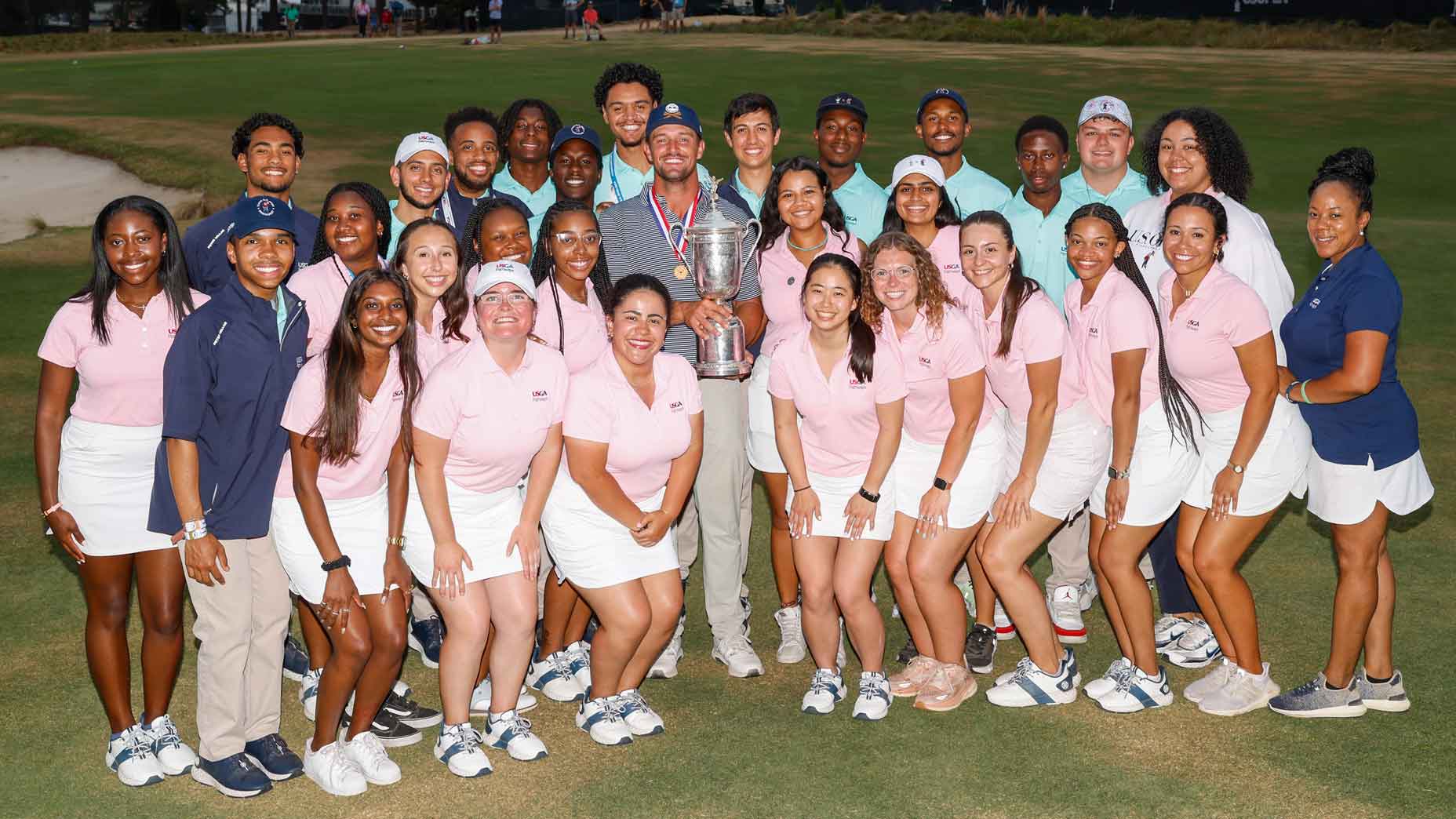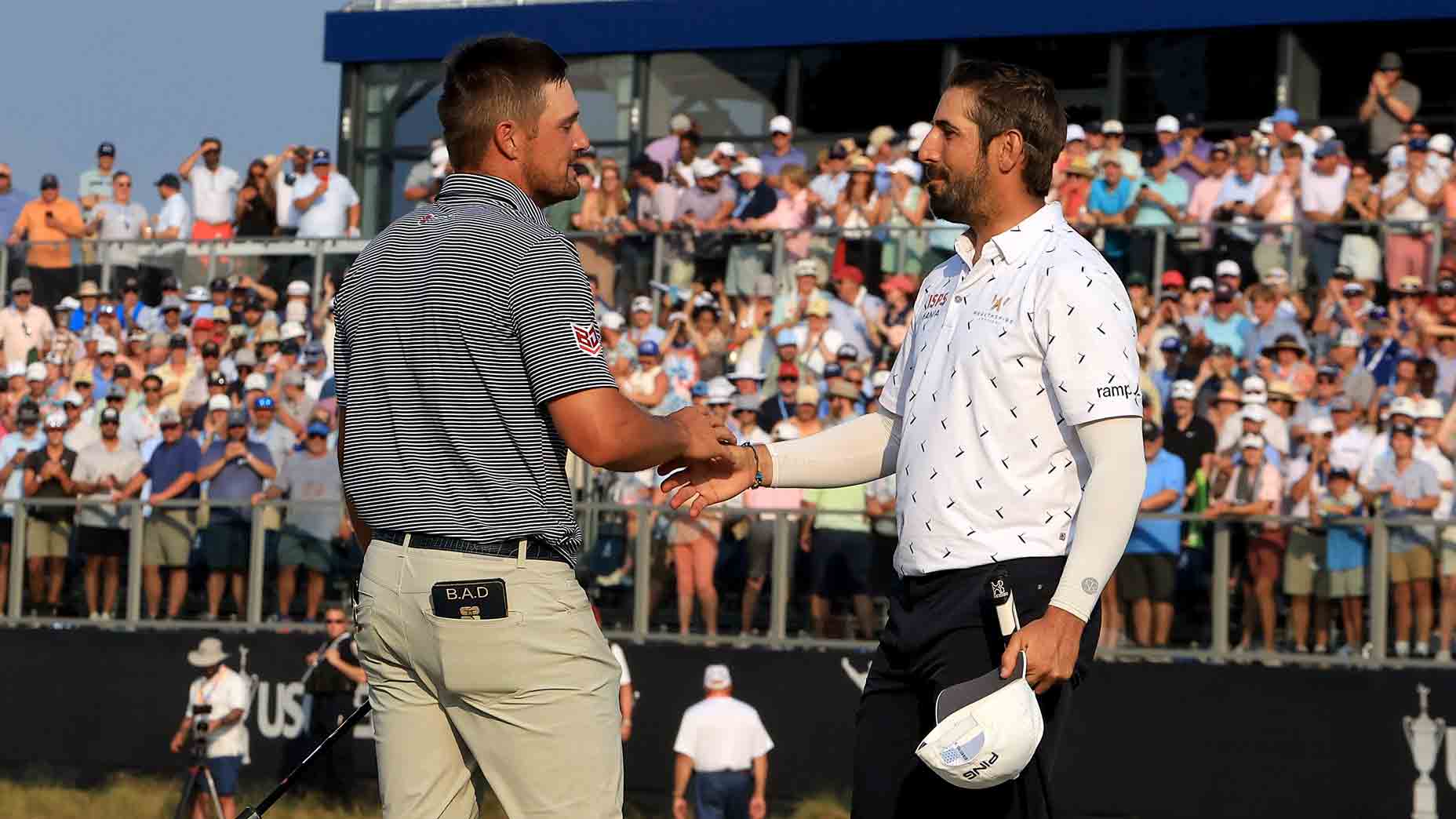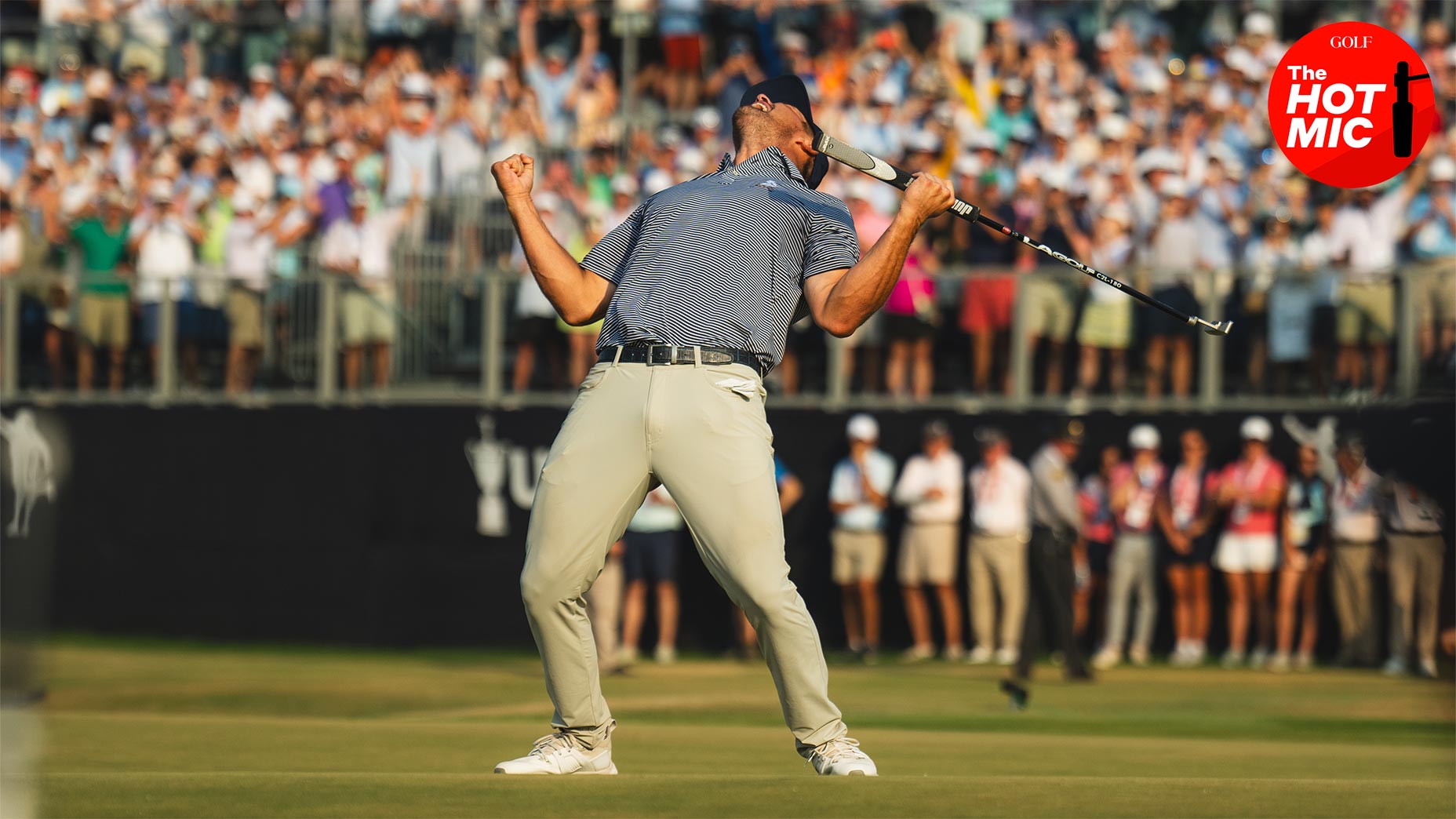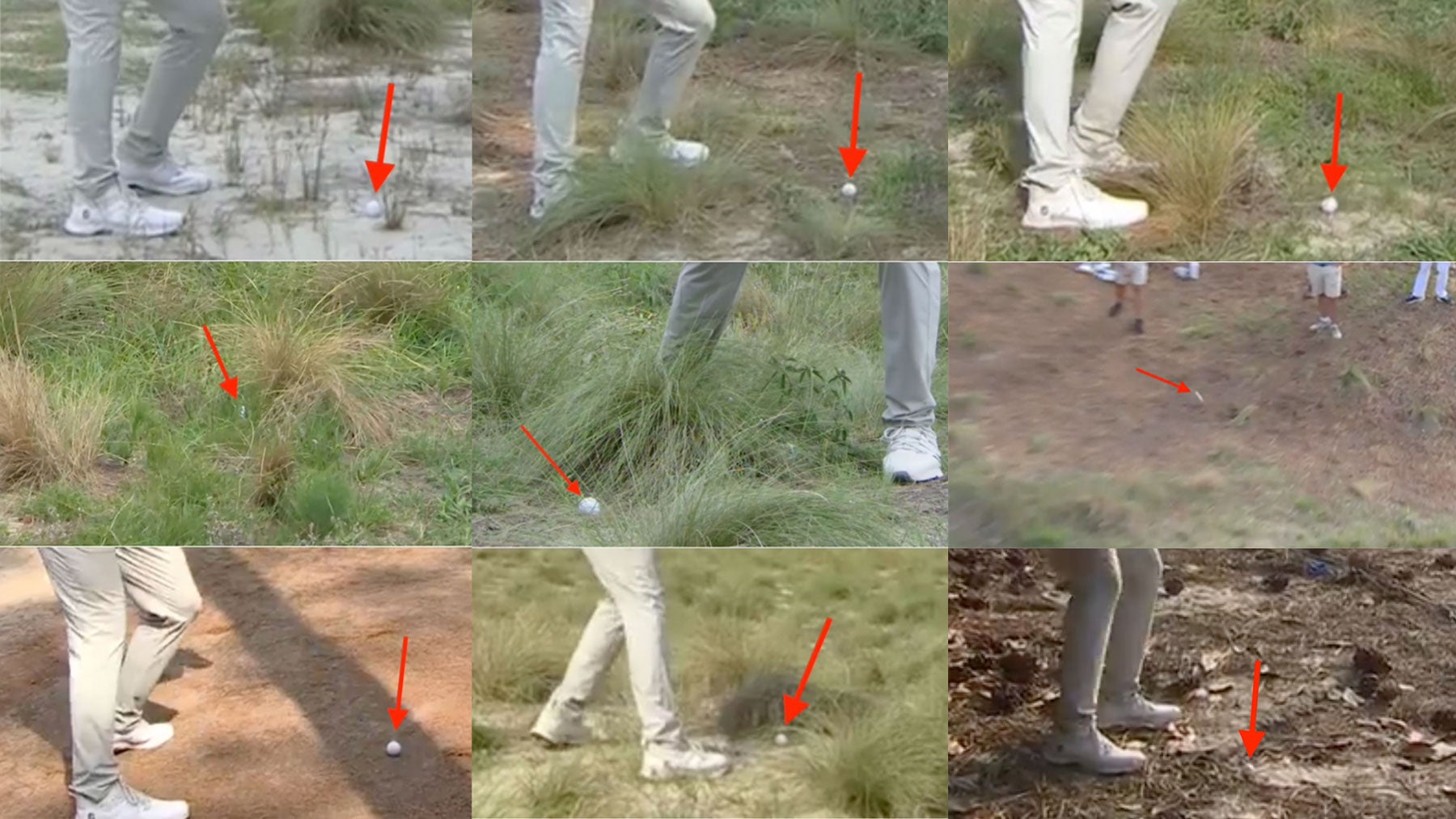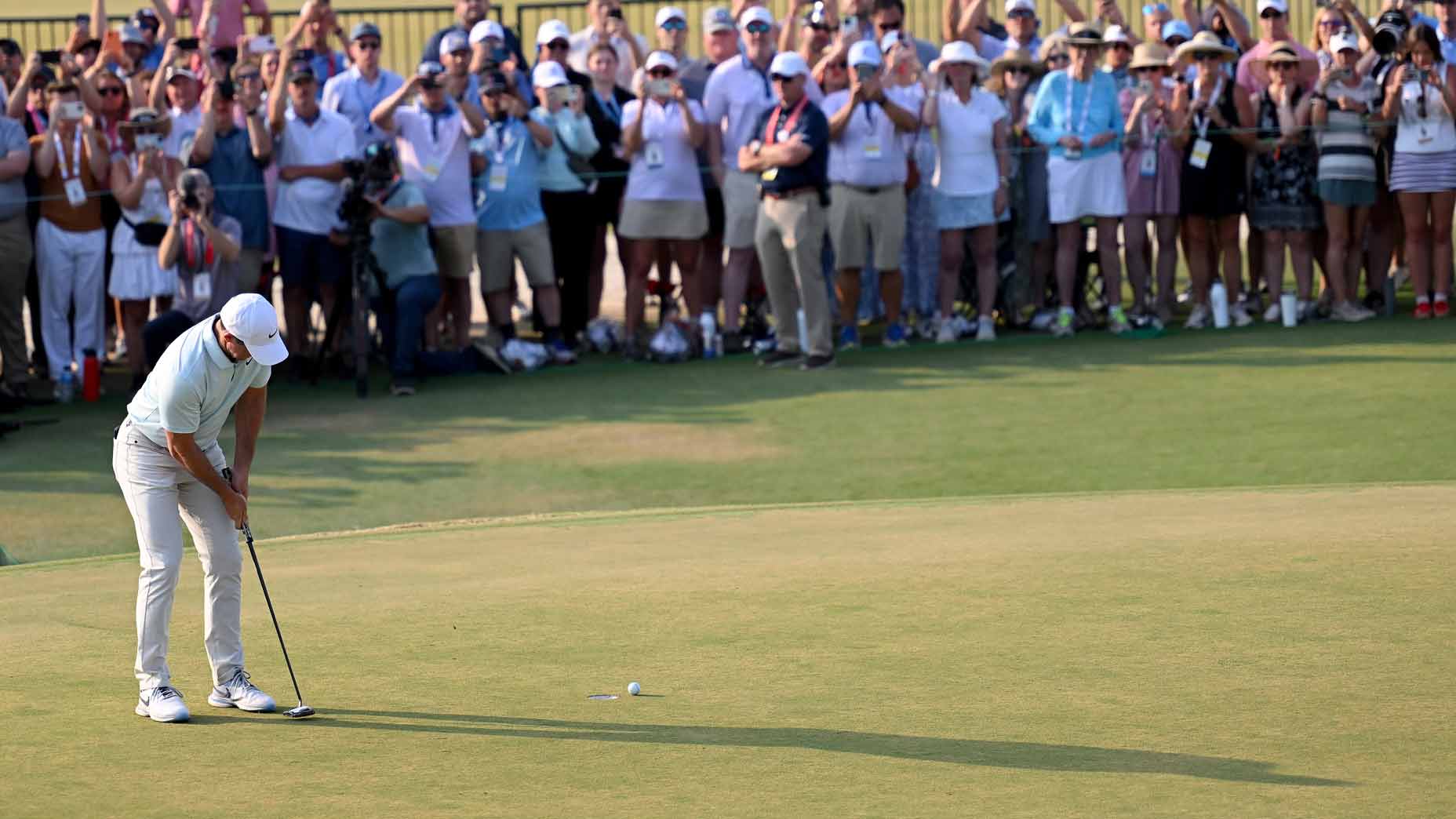‘Monsters’: Some of the longest par-3s in U.S. Open history bit back on Friday
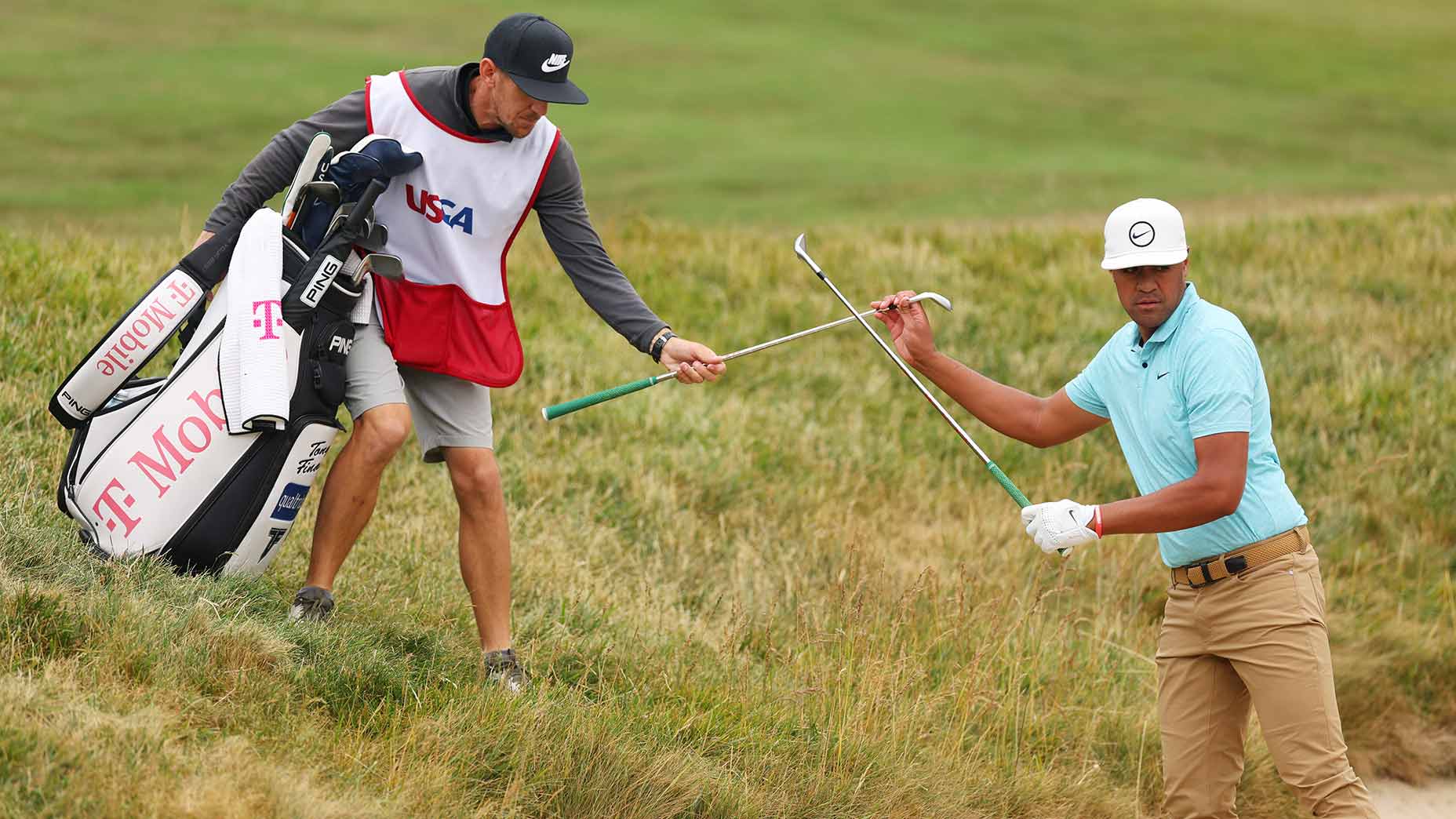
Tony Finau climbs down into a bunker on the par-3 7th hole on Thursday at Los Angeles Country Club.
Getty Images
LOS ANGELES — It was 9:45 local Friday morning, I had a coffee and notebook and was headed out to explore Los Angeles Country Club. I wanted to plop down at the brutal par-3s, take in the action and see if they were as menacing as promised following Thursday’s U.S. Open cakewalk.
Then, suddenly, as I walked next to the 15th hole, the ground shook. A roar initiated mere feet from me and reverberated through the grounds. Matt Fitzpatrick had aced the cute little 115-yard par-3 15th.
The crowd was buzzing. I stopped for a moment, watching Fitzpatrick pluck his ball out of the cup, but then continued with my mission — the par-3s I was headed toward wouldn’t be near as pleasant.
On Thursday, after Rickie Fowler and Xander Schauffele shot 62 and a first-round scoring record (71.34) was set, players were quick to point out that we were a long way from the finish line. Turns out they were right. Good scores were still available on Friday, but the brutal par-3s at LACC’s North Course flexed their muscles and helped keep the leaderboard at bay.
“There are some monsters on this golf course,” warned John Bodenhamer, the USGA’s chief championships officer (and course setup guru), on Wednesday. “There are some brute par-3s and 4s and there’s really an ebb and flow like I don’t think I’ve ever seen before.”
There are five of those par-3s here at LACC, one a mere flip wedge (the 15th) and another a mid-iron (the 9th). But the other three (the 4th, 7th and 11th) would make high-handicappers weep. Stock yardages are 228, 284 and 290 yards, but on Friday, the USGA beefed ’em up even more.
The 7th played 299 yards, tying it for the second-longest par-3 in U.S. Open history, and the 11th played at 297 yards, making it the fourth-longest in U.S. Open history.
Yes, that meant two of the four longest par-3s in the national championship’s 100-plus years were part of the routing on Friday. (The longest par-3 in history remains Oakmont’s 300-yard 8th from 2007.)
And how’d the brutes play? Hard.
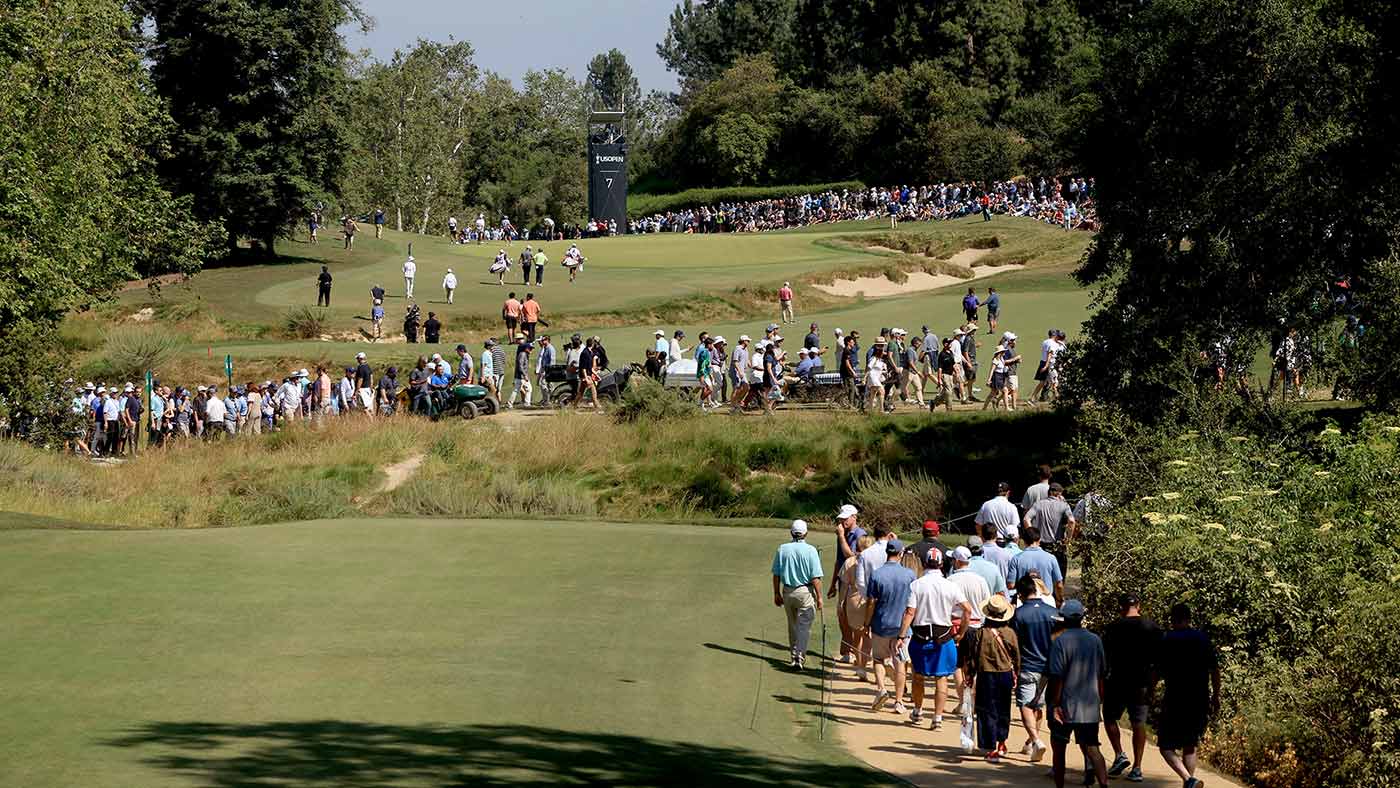
The 4th, 7th and 11th were three of the four most difficult holes of the day, with the 7th earning the crown as the hardest. The scoring average on 7 was .506 over par on Friday. If that trend continues through the weekend, No. 7 would rank as both the hardest par-3 in pro golf this year and the second-toughest par-3 pro golf has seen in the last five years. In fact, the scoring average on 4 (.417 over par) and 11 (.372 over par) would have made either the hardest par-3 in this golf season, if not for the 7th taking that title.
“I think 7 is harder,” said Harris English. “Well, they’re both really hard. I hit the green on both. I think 7 is harder. Standing up there knowing you’ve got to stripe a 3-wood to get to the front is kind of intimidating.”
The 4th isn’t as long as 7 or 11 — just an easy 221 yards on Friday — but it still causes fits.
“The greens are starting to get firm, and that one is more of a setup [challenge],” said Wyndham Clark, who sits in second at nine under. “It’s just really hard to hit it close. Guys aren’t really going to be making birdies, and if you miscue there it’s an easy bogey.”
All week, players said the course would get firmer as the tournament progressed, although the key to that is a little sunshine. The biggest splash of it came on Friday afternoon, and scores (finally) started to climb a little higher. Players were getting more roll, but roll didn’t necessarily make the pair of nearly 300-yard par-3s any easier.

Most players, even the longest in the game, hit woods or hybrids off the tee. Some — like Tony Finau and Brooks Koepka — a driving iron. Dustin Johnson hit a fairway wood on both holes. (These long par-3s also led to long waits, and most groups waited for a good 10 minutes on the longer par-3 tee boxes.)
The 7th has a deep green. It played about 270 to the front and had the pin tucked in the back-left corner. On Friday, the key was to land it short and run it up, as there are deep bunkers right that are almost automatic bogeys. Some players tried so hard to avoid them they overcooked their tee shot, going well left and landing on the 5th fairway. Those also led to bogeys.
The 11th only has about 40 feet of elevation drop, but the green is heavily bunkered. The strategy here is to land something near the front edge of the green as well, but the green is pushed up and big misses that avoid the bunkers might tumble down the hill. Only a handful of players got those up and down for par on Friday.
“If you mishit it on one of those holes, you’re going to have 40 yards to try to get up and down,” Clark said. “And even the best players in the world, we might even be 50 or 60 percent from that distance.”
NBC analyst John Cook, an 11-time PGA Tour winner, was walking with and covering the Jordan Spieth/Patrick Cantlay/Finau group on Friday. He summed it up well.
“I know what I’d be hitting,” he said, laughing. “I might even be laying it up.”




